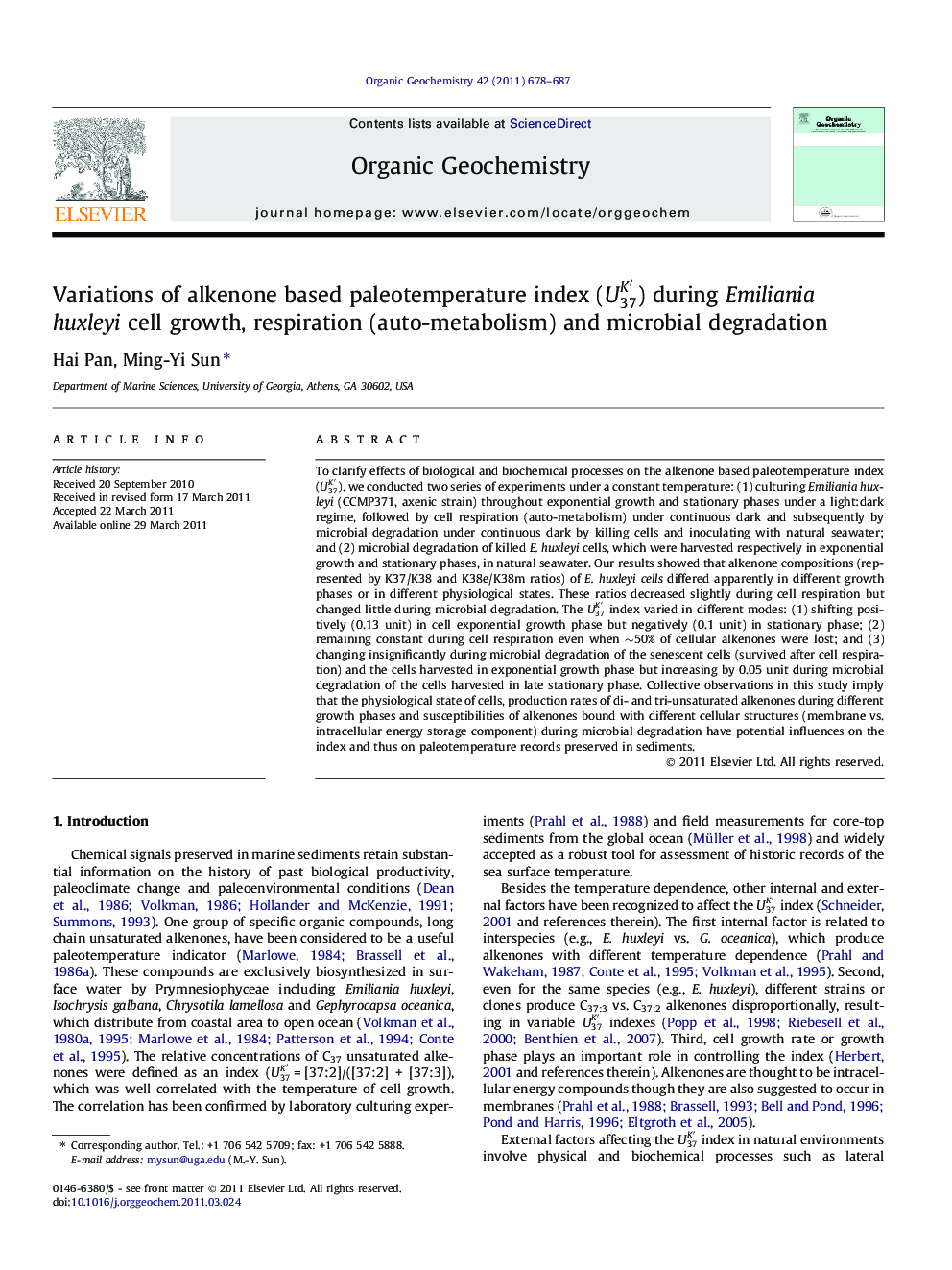| Article ID | Journal | Published Year | Pages | File Type |
|---|---|---|---|---|
| 5163356 | Organic Geochemistry | 2011 | 10 Pages |
Abstract
To clarify effects of biological and biochemical processes on the alkenone based paleotemperature index (U37Kâ²), we conducted two series of experiments under a constant temperature: (1) culturing Emiliania huxleyi (CCMP371, axenic strain) throughout exponential growth and stationary phases under a light:dark regime, followed by cell respiration (auto-metabolism) under continuous dark and subsequently by microbial degradation under continuous dark by killing cells and inoculating with natural seawater; and (2) microbial degradation of killed E. huxleyi cells, which were harvested respectively in exponential growth and stationary phases, in natural seawater. Our results showed that alkenone compositions (represented by K37/K38 and K38e/K38m ratios) of E. huxleyi cells differed apparently in different growth phases or in different physiological states. These ratios decreased slightly during cell respiration but changed little during microbial degradation. The U37Kâ² index varied in different modes: (1) shifting positively (0.13 unit) in cell exponential growth phase but negatively (0.1 unit) in stationary phase; (2) remaining constant during cell respiration even when â¼50% of cellular alkenones were lost; and (3) changing insignificantly during microbial degradation of the senescent cells (survived after cell respiration) and the cells harvested in exponential growth phase but increasing by 0.05 unit during microbial degradation of the cells harvested in late stationary phase. Collective observations in this study imply that the physiological state of cells, production rates of di- and tri-unsaturated alkenones during different growth phases and susceptibilities of alkenones bound with different cellular structures (membrane vs. intracellular energy storage component) during microbial degradation have potential influences on the index and thus on paleotemperature records preserved in sediments.
Related Topics
Physical Sciences and Engineering
Chemistry
Organic Chemistry
Authors
Hai Pan, Ming-Yi Sun,
